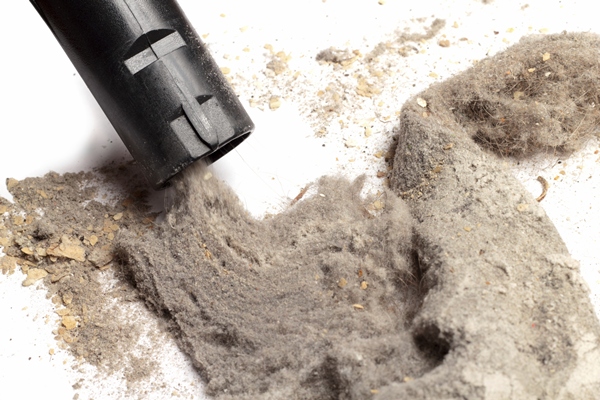 There are a few industrious souls out there who keep up with the weekly task of removing dust from their homes. Surfaces of furniture are dusted, carpets are vacuumed, bedding is washed, and floors are cleaned. Why do some people work this hard? It’s because dust can accumulate surprisingly quickly. It gets into everything, under everything, and on top of everything. Short of declaring warfare on all dust, you’re bound to be living with a little dustiness. Dust is part of the air you breathe inside your home.
There are a few industrious souls out there who keep up with the weekly task of removing dust from their homes. Surfaces of furniture are dusted, carpets are vacuumed, bedding is washed, and floors are cleaned. Why do some people work this hard? It’s because dust can accumulate surprisingly quickly. It gets into everything, under everything, and on top of everything. Short of declaring warfare on all dust, you’re bound to be living with a little dustiness. Dust is part of the air you breathe inside your home.
Dust, although seemingly benign, can actually cause quite an impressive list of health problems. Dust has been tagged for a long time as an allergen. It makes most people sneeze and causes congestion. It can also trigger more serious symptoms, such as an asthma attack. Dust can irritate your skin and even disrupt your sleep.
Some people mistakenly think that dust is a substance that has a lot in common with dirt or soil. Dust is actually not caused by the breakdown of plant material. Dust is actually alive. It contains tiny microscopic creatures called dust mites. Dust mites feed off human skin cells that have been shed, pet dander, as well as their own discarded skin cells and feces. If that sounds gross, it is! However, take some comfort in the fact that this is all happening on the microscopic level.
Where do dust mites live? They take up residence in your pillows, your mattresses, your blankets, your couch, and your carpet. The more humid it is, the happier dust mites are.
Now, you may be wondering if it’s good for you to be living side by side with dust mites. The answer is not really! To avoid the health risks associated with dust mites, here are five tips to help you reduce your exposure to these pesky little creatures.
1. If you think dust might be responsible for the chronic congestion you’ve been experiencing, it may be time to get rid of any carpet in your house. Carpet can hold a lot of dust no matter how much you vacuum. Although carpet can feel warmer in the winter and provide a little cushioning for your feet and joints all year long, it’s very difficult to prevent dust from settling in the carpet fibers. If you really like the warmth and look of having a carpet, opt for an area rug, and have it washed once a year.
2. A large upholstered couch is another dust magnet. It’s impossible to keep dust from collecting in the fabric of a couch, even if you’re able to remove the cushion covers and wash them. If you’re reacting to dust in your home, consider buying a leather couch to dramatically reduce the amount of dust swirling in the air when you sit on the cushions. You can take a similar approach to the drapes in your home. Heavy cotton drapes may be beautiful to look at, but they can also hold a lot of dust that gets sent into the air every time you open or close them. Opt for wood blinds instead, which can easily be wiped clean.
3. Change all the filters in your house regularly: that means the furnace filter, the filters on your vacuum, in your air conditioner, and air purifiers. Replace filters with HEPA filters if possible which do a superior job removing dust.
4. Wash your bedding and pillows regularly. Dust mites love pillows. Wash in hot water and add a little vinegar too (never mix vinegar and chlorine, however, as this forms a poisonous gas).
5. Use a little old-fashioned elbow grease and dust your home thoroughly every week. Use microfiber cloth on floors and surfaces to better trap dust.
Sources:
Ott, S., “Health Risks of Dust in Your Home,” Yahoo Voices web site, Mar. 18, 2011; http://voices.yahoo.com/health-risks-dust-home-8088472.html?cat=6, last accessed Dec. 19, 2013.
“Dust Mite Control in the Home,” Asthma Society of Canada web site; http://asthma.ca/corp/services/pdf/asthma_dust_mite_eng.pdf, last accessed Dec. 19, 2013.
